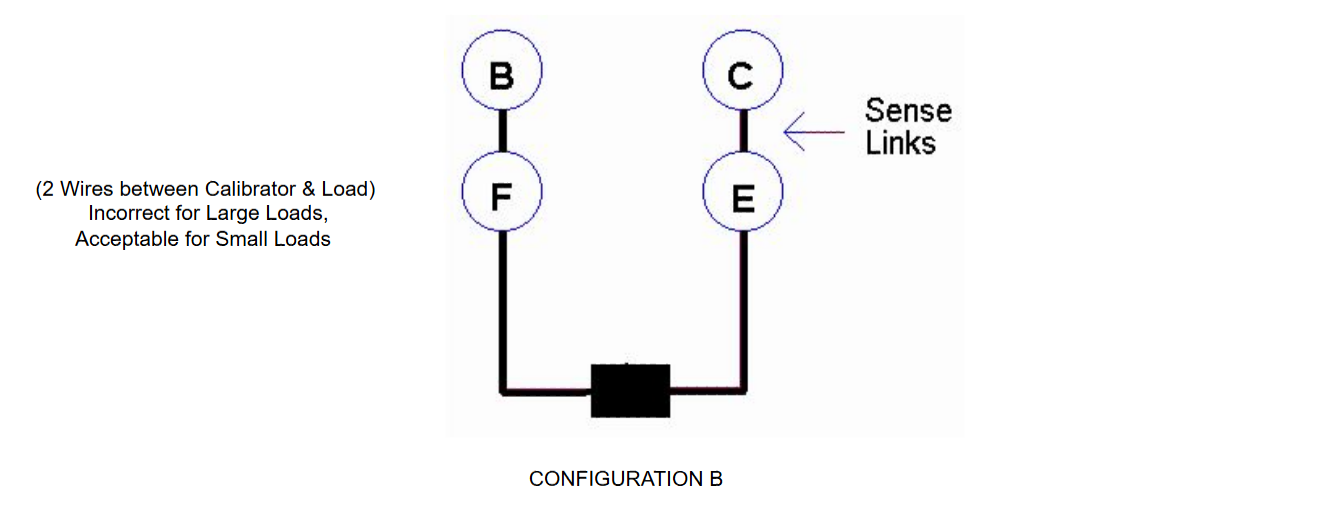Technical Notes

Table of Contents
Technical Note #1 - Model 521 and 522 IEEE-488 Communications Errors
Technical Note #2 - Switch Maintenance for Models 330, 1030, 4032, 4600, 4601, CR Series, E100RC, MV Series
Technical Note #3 - Noise Measurements for Calibrators
Technical Note #4 - Reset Protocol and Initialization Problems with IEEE-488.1 and IEEE-488.2
Technical Note #5 - Model 501, 520A, 521 and 522 Rear Panel Analog Output Connections
Technical Note #1
Model 521 and 522 IEEE488 Communications Errors
Repeat Addressing
The Krohn-Hite (EDC) Models 521 and 522 sold after June 2005 take advantage of HS488. These units do not need to be readdressed for continuous reads or writes. You will need to readdress the 521 or 522 if you address another unit with a different address.
Units sold before June 2005 conform to IEEE-488.1 standards and require GPIB addressing before any GPIB activity. You should configure your GPIB driver to perform repeat addressing. Refer to your GPIB controller manual for information about reconfiguring your controller.
Most units sold after January 2000 can be updated to take advantage of the HS488 version. Contact your local distributor or the factory for more information.
Termination Method
The model 521/522 must receive an end of message terminator to respond to a command string. Valid terminators that the model 521/522 will recognize include <CR> <LF> and EOI.
Technical Note #2
Switch Maintenance for Models: 330, 1030, 4032, 4600, 4601, CR Series, E100RC, MV Series.
The decade and range switches of the Models referred to above are lubricated at the factory. It is recommended that these switches DO NOT receive any service during the first year of operation. If you feel there is a problem, consult the factory.
Note: Overzealous, arbitrary, or unnecessary cleaning may damage the switch contacts, which should be maintained below 10 millionohms.
Cleaning: Do not arbitrarily clean the switches. In many instances, lubrication may be all that is required. Relubricate After Cleaning! Lubricating could shorten the life of the switches to about two months.
Contamination From Silicone Based Lubricants: Silicone-based cleaners/lubricants should not be used where electrical contacts and other electrical components are used. Silicone will react with plastics and atmospheric contamination to form insulating films and silicone carbide compounds. Over time, silicone will react with plastics, softening them, thereby breaking down the integrity of the component (switch, relay, etc.). Silicone-based lubricants may also have been used as a mold release agent or as a general cleaner for housings. Since silicone can migrate great distances, it is recommended to clean the silicone off the surfaces. DeoxIT and PreservIT will displace the silicone.
Do Not Use Pencil Erasers: Do not use an eraser - any type of eraser - to clean contacts. Erasers are highly abrasive and will remove the precious metal plating. Further, the glue in erasers leaves behind a film that is extremely difficult to remove, which can later cause intermittent operation. Rubbing an eraser back and forth across the contacts can be a potential static generator.
General Information & Precautions: When using any aerosol, the unit should be de-energized (turned off) and used in well-ventilated areas. Switch to Contacts cleaner. DeoxIT is a fast-acting, deoxidizing solution that cleans, preserves, lubricates, and improves conductivity on metal connectors and contacts. Switch Contacts lubrication. PreservIT seals, lubricates, and preserves metal surfaces for protection from oxidation and contamination. For use on clean/new surfaces or those pre-cleaned with DeoxIT. PreservIT contains no cleaners or deoxidizers. It provides long-lasting protection for newly manufactured components or those cleaned by ultrasonics, DeoxIT or other procedures. PreservIT is recommended as a final treatment for surfaces that are in constant motion and/or subject to higher degrees of atmospheric contamination.
Spray Products Directions - DeoxIT Cleaner: Ideal for general-purpose applications. Contains petroleum naphtha as the carrier solvent. It is flammable but non-aggressive to almost all materials. Apply a short burst to the metal surface and operate devices to assist in breaking up of oxide layers. For severely oxidized surfaces, wait a few minutes before operating. Then use lint-free applicators on accessible surfaces and wipe until the surface appears clean. In inaccessible areas, flush away oxides with DeoxIT D5. As a final step, spray a short burst of DeoxIT for protection. Includes a precise, three-way adjustable valve for controlled dispensing with minimal waste and overspray.
PreservIT P5 Lubricant: Ideal for general purpose applications. Contains petroleum naphtha as the carrier solvent. It is flammable but non-aggressive to almost all materials. After cleaning metal surface, apply a short burst of PreservIT. If accessible, wipe with a lint-free applicator. If discoloration appears, the metal surface is not clean - use DeoxIT first. As a final step, spray a short burst of PreservIT for protection. PreservIT P5 includes precise, three-way adjustable valve for controlled dispensing with minimal waste and over-spray.
Technical Note #3
Noise Measurements
Krohn-Hite uses the following procedure to measure the noise levels on the voltage calibrators. Techniques are employed to minimize external ground loops and radiation paths, which may introduce improper data into the desired measurements.
"Rule of Thumb": If the measurement indicates more than 1mVp-p. of noise on any Krohn-Hite instrument, the operator should recheck his equipment and lash-up.
Because noise may appear in many forms, Krohn-Hite recommends the use of an oscilloscope to make the noise measurements. A high-gain 50 μV/cm or better differential pre-amp, such as the 1A7A, or the 7A22 Textronix models, or equivalent, is well suited for this application. In an environment with excessive EMI levels, these tests should be performed in a screen room. This will prove the specs of the Krohn-Hite unit and will, with a comparison test in the normal environment, permit calibration for radiated noise pickup on the test measurements. The noise test should not be made simultaneously with the regulation and voltage accuracy test. The "pump back" currents from some measuring devices will seriously disturb noise measurements.
Differential input measurements are the most reliable. They will cancel out common mode due to slight errors in lash-up.
The scope and the Krohn-Hite calibrator under test should be connected to adjacent power outlets on the same phase. A three-wire ground is required. In the event the line does not have a ground, the scope and unit under test should have a separate, heavy wire chassis-to-chassis connection separate from the shield of the differential input leads. The lead used between the scope input and the source output should be a shielded, twisted pair with the shield connected to the frame of the scope and to the ground lug adjacent to the output terminals of the Krohn-Hite source. Do not use the shield of the input cable as the chassis-to-chassis connection in place of the line system ground. Use additional separate heavy wire.
If the Krohn-Hite instrument has remote sensing, be sure that the "output" and "sense" terminals are bussed. Set the output on the instrument to zero on each voltage range. Observe that ripple and noise do not exceed specified values.
Note: The "DC" mode on the preamp in use usually results in more accurate "noise" measurements. Be aware of the specifications for your preamp if this test is made at voltage levels other than zero and AC input is used.
Technical Note #4
Reset Protocol and Initialization Problems with IEEE-488.1 and IEEE-488.2
From time to time some customers have had problems with the RTS command (IEEE-488.2) when trying to initialize or reset a Krohn-Hite device in their systems, especially when the device is the first in the chain. The RESET protocol implemented in IEEE-488.2 initializes an entire system using 3 levels of reset. However, devices that only implement IEEE-488.1 reset commands will experience problems using the RTS command. Below are the three levels the RTS command implements:
The first level of reset places the system bus into an idle condition. All devices are unaddressed and put into a serial poll idle state and the system controller becomes the controller-in-charge. This first level is referred to as bus initialization.
The second level of reset ensures that a device can be sent a PROGRAM MESSAGE.
The third level of reset initializes device-specific functions.
All Krohn-Hite instruments conform to the IEEE-488.1 Standard, not IEEE-488.2 If a program is written using the IEEE-488.2 protocols for reset, the device may hang the system. To initialize or reset the Krohn-Hite instrument, send a DEVICE CLEAR or an IFC command separately; do not include the Krohn-Hite device when sending the RTS command. The RTS command, as part of its 3 levels of reset, sends a message exchange initialization or a universal reset, which will most likely hang the system.
Please be aware of the following warning stated in the ANSI/IEEE Std 488.2-1987 standard.
"WARNING: Devices that do not comply with IEEE-488.2 may behave much differently from what is described in this protocol for message exchange and device initialization. A bus initialization, IFC, should behave identically on all IEEE-488.1 devices. The behavior of non-IEEE-488.2 devices should be investigated before doing message exchange initialization with them. A device initialization should NEVER be done to a device that has not implemented the RST command."
Technical Note #5
Model 501, 520A, 521 and 522 Rear Panel Analog Output Connections




